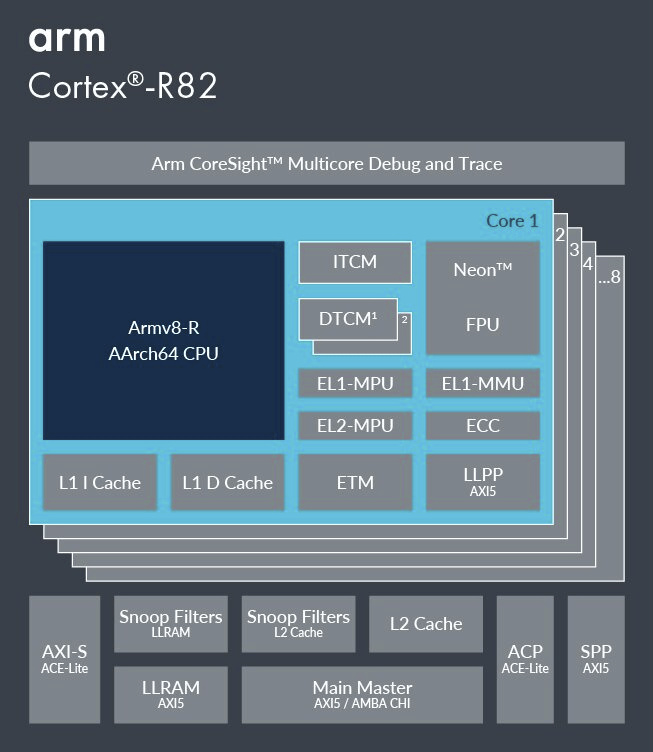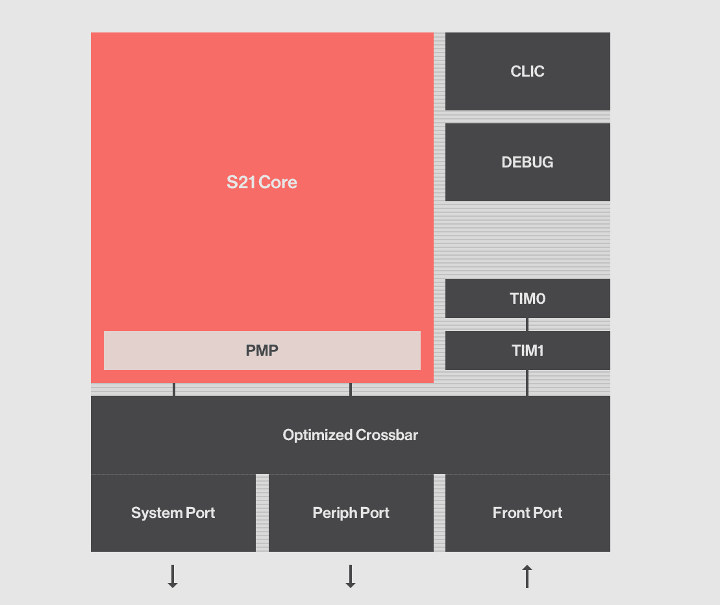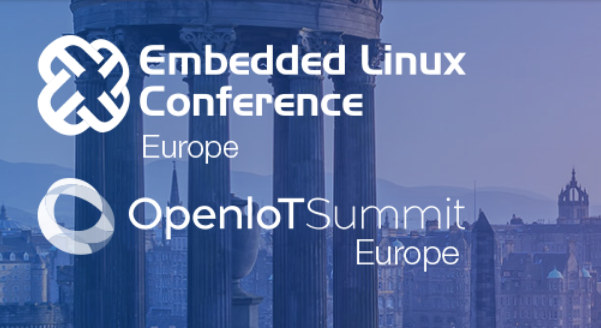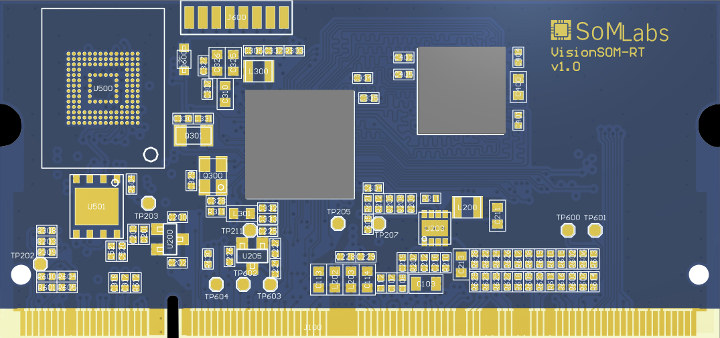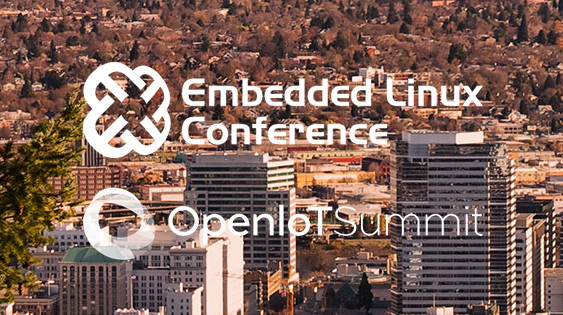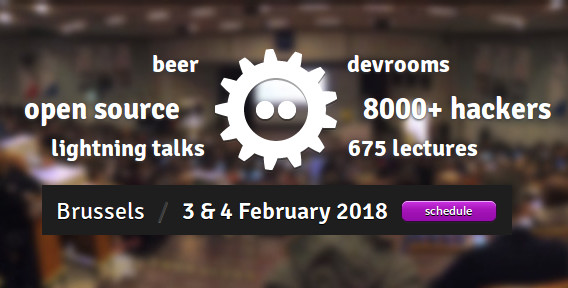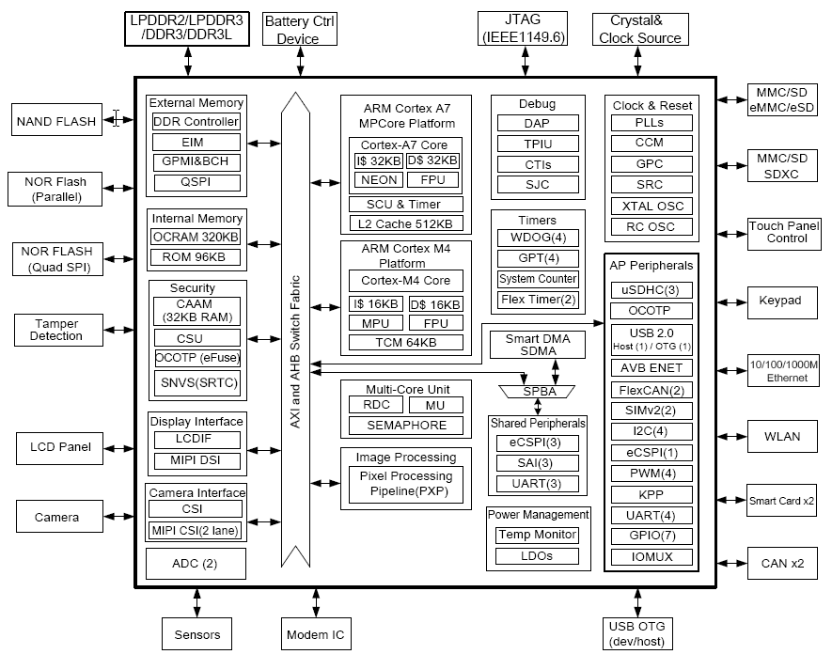Arm hast just unveiled Cortex-R82 64-bit real-time processor that is Linux-capable and designed for “next-generation enterprise and computational storage solutions”. What’s computation storage? To clearly understand what we’re dealing, let’s first find out what computational storage is via SNIA website: Computational Storage is defined as architectures that provide Computational Storage Services coupled to storage, offloading host processing, or reducing data movement. A Computational Storage Service (CSS) is a data service or information service that performs computation on data where the service and data are associated with a storage device. So If I understand correctly, so far all we asked from SSD’s, hard drives, and other storage, was to move and store data as fast as possible to a host device capable any analyzing the data. But computational storage brings this to the storage device itself, so we may soon have Smart Hard Drives that run Linux and do some of […]
SiFive S2 RISC-V Core may be the World’s Smallest 64-bit Embedded Core
Last year, SiFive introduced their first RISC-V cores competing with Arm Cortex-R family of processors thanks to their S7 Series 64-bit RISC-V Core IP providing an answer to Arm Cortex-R7/R8 32-bit real-time processors. The company has now announced the SiFive S2 RISC-V core that it claims to be the world’s smallest 64-bit embedded core, and also the first SiFive IP core without any direct competitive equivalent in the market. For now, there’s only one core in the family with SiFive S21 offering the following key features: RISC-V ISA – RV64IMAC 64-bit AXI Ports Machine and User Mode with 4 Region Physical Memory Protection 3-stage pipeline with Simultaneous Instruction and Data Access 2 Banks of Tightly Integrated Memory (TIM) CLIC (Core Local Interrupt Controller) with 127 interrupts Advanced debug with 4 hardware breakpoints/watchpoints Performance – 1.6 DMIPS/MHz; 3.2 Coremarks/MHz The company compares its to the SiFive S5 cores, which I had […]
Embedded Linux Conference Europe & OpenIoT Summit Europe 2018 Schedule
The Embedded Linux Conference & OpenIoT Summit 2018 took place in March of this year in the US, but the European version of the events are now planned to take place on October 21-24 in Edinburg, UK, and the schedule has already been released. So let’s make a virtual schedule to find out more about some of interesting subjects that are covered at the conferences. The conference and summit really only officially start on Monday 22, but there are a few talks on Sunday afternoon too. Sunday, October 21 13:30 – 15:15 – Tutorial: Introduction to Quantum Computing Using Qiskit – Ali Javadi-Abhari, IBM Qiskit is a comprehensive open-source tool for quantum computation. From simple demonstrations of quantum mechanical effects to complicated algorithms for solving problems in AI and chemistry, Qiskit allows users to build and run programs on quantum computers of today. Qiskit is built with modularity and extensibility […]
VisionSOM-RT is an Industrial System-on-Module based on NXP i.MX RT Arm Cortex-M7 Processor
It’s hard to keep up with all the systems-on-module based on Arm Cortex-A “application class” processors, but so far I can’t remember seeing any Arm Cortex-M “microcontroller class” SoM. However, SoMLabs is currently working on VisionSOM-RT, a system-on-module based on NXP i.MX RT 1050 Arm Cortex-M7 processor clocked at 600 MHz. NXP i.MX RT series processors are actually promoted as a “crossover” processor delivering application processor performance with real-time capabilities right at the edge between the two classes of processors. VisionSOM-RT (SLS12Rx) module preliminary specifications: SoC- NXP i.MX RT Arm Cortex-M7 processor @ up to 600MHz with NXP PXP 2D graphics accelerator, and Graphics Engine PXP PiXel processing pipeline for imagine resize, rotation, overlay and color space conversion. Memory – 512kB on-chip RAM memory, up to 32MB SDRAM Storage – Up to 16MB QuadSPI flash, optional 4GB eMMC flash 200-pin SO-DIMM edge connector with Display Interface – 8/16/24-bit Parallel RGB […]
Embedded Linux Conference & IoT Summit 2018 Schedule
The Embedded Linux Conference 2018 and the OpenIoT Summit 2018 will jointly take place next month, on March 12 – 14, 2018 in Portland, Oregon, USA. The former is a “vendor-neutral technical conference for companies and developers using Linux in embedded products”, while the latter is a “technical conference for the developers and architects working on industrial IoT”. The Linux Foundation has already published the schedule, and it’s always useful to learn what will be discussed about even for people who won’t attend. With that in mind, here’s my own virtual schedule with some of the talks I find interesting / relevant to this blog. Monday, March 12 10:50 – 11:40 – Progress in the Embedded GPU Ecosystem by Robert Foss, Collabora Ltd. Ten years ago no one would have expected the embedded GPU ecosystem in Linux to be what it is now. Today, a large number of GPUs have […]
FOSDEM 2018 Open Source Developers Meeting Schedule
FOSDEM (Free and Open Source Software Developers’ European Meeting) occurs every year on the first week-end of February, where developers meet for two days discussing about open source software projects. FOSDEM 2018 will take place on February 3-4 this year with 652 speakers, 684 events, and 57 tracks, an increase over last year 608 speakers, 653 events, and 54 tracks. There will be 8 main tracks namely: Community, History, Miscellaneous, Performance, Python, Security and Encryption, Space, and Global Diversity CFP Day. There will also be 33 developer rooms, and since the full schedule is now available, I’ll make a virtual schedule mostly based on sessions from the Embedded, mobile, and automotive, Hardware Enablement, and Internet of Things devrooms. Saturday 3, 2018 09:50 – 10:15 – Turning On the Lights with Home Assistant and MQTT by Leon Anavi In this presentation you will learn the exact steps for using MQTT JSON […]
Embedded Linux Conference & Open Source Summit Europe 2017 Schedule
The Embedded Linux Conference & IoT summit 2017 took place in the US earlier this year in February, but there will soon be a similar event with the Embedded Linux Conference *& Open Source Summit Europe 2017 to take up in Europe on October 23 – 25 in Prague, Czech Republic, and the Linux Foundation has just published the schedule. It’s always useful to find out what is being discussed during such events, even if you are not going to attend, so I went through the different sessions, and compose my own virtual schedule with some of the ones I find the most interesting. Monday, October 23 11:15 – 11:55 – An Introduction to SPI-NOR Subsystem – Vignesh Raghavendra, Texas Instruments India Modern day embedded systems have dedicated SPI controllers to support NOR flashes. They have many hardware level features to increase the ease and efficiency of accessing SPI NOR […]
HMP, Real-Time Linux and Xenomai – A Look at Three Options to Develop Real-Time Linux Systems on Application Processors
This is a guest post about Heterogeneous Multicore Processing (HMP), Real-Time Linux, and Xenomai to develop real-time Linux systems written by Guilherme Fernandes, Raul Muñoz, Leonardo Veiga, Brandon Shibley, all working for Toradex. Introduction Application processor usage continues to broaden. System-on-Chips, usually powered by ARM Cortex-A cores, are taking over several spaces where small ARM Cortex-M, and other microcontroller devices, have traditionally dominated. This trend is driven by several facts, such as: The strong requirements for connectivity, often related to IoT and not only from a hardware point of view but also related to software, protocols, and security The need for highly interactive interfaces such as multi-touch, high-resolution screens, and elaborate graphical user interfaces; The decreasing price of SoCs, a consequence of its volume gain and new production capabilities. Typical cases exemplifying the statement above are the customers we see every day starting a product redesign upgrading from a microcontroller […]


